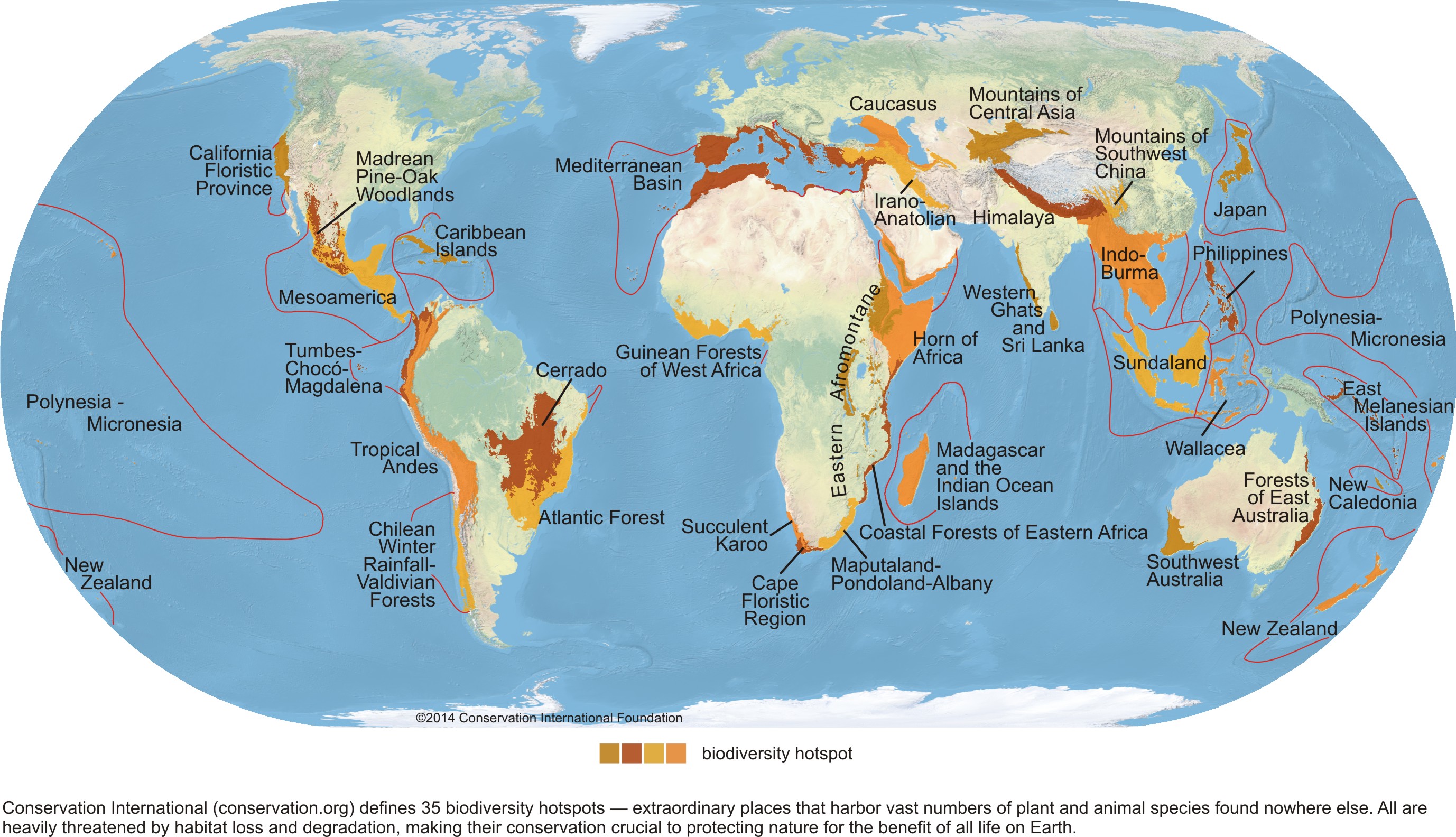Blog #8
Title: Conservation for the People
Author: Peter Kareiva and Michelle Marvier
Date: October 2007
Source: Scientific American
URL: https://drive.google.com/file/d/1ClKlOEmqikHctDWvsGYZPJsINfhecdxx/view
In 2004, three vultures were placed on the critically endangered list by the World Conservation Union, but no one knew what was causing the decline in the vulture population. Later, researchers discovered that the birds were being killed by a drug called diclofenac, which is usually given to cows, but very bad for vultures. Because the vultures disappeared, cow carcasses were piling up and started to be consumed by dogs. Therefore, the feral dog population increased, but as did the threat of rabies.
In 1988, Norman Myers developed the idea of biodiversity hot spots, which are small areas that harbor endemic or restricted plant species. He went on to identify 25 hot spots to focus conservation projects to conserve the most amount of biodiversity. However, the word biodiversity is not popular among the general public and has not been able to create interest in the public. Also, other biologists have said that even less diverse regions have important roles to certain species, so they should not be overlooked either
Instead of trying to incite interest in biodiversity, conservationists are now focusing on ecosystem services. This approach has gained interest in governments and nongovernmental organizations, as well as the United Nations. Research commenced and found that ecosystems services have declined and are being used unsustainably, affecting human health and well being. Even some conservationists deny how we are draining ecosystem services, but there is plenty of evidence to prove them wrong.

Comments
Post a Comment